Childhood is not just a time of carefree games and discoveries. It is the foundation of the entire future life of a child. It is during childhood that habits are formed, imagination develops, and basic communication and thinking skills are laid down. One of the best habits you can instill from an early age is a love for books.
But what if you could combine exciting reading with practical benefits? For example, introduce your child to the best American children's books. These are not just stories about adventures or kind heroes — they are a window to another world, a way to introduce your little one to the English language, expose them to another culture, and broaden their horizons.
American children's literature has long won the hearts of readers around the world. Bright illustrations, lively dialogues, and understandable emotions — these books are easily perceived and spark genuine interest even in those who are just learning to read.
In this article, we will tell you about the books children read in the USA, how to choose those that are suitable by age and interest. If you want to do more than just read with your child, but spend time productively and with a long-term perspective — keep reading.

"When I write for children, I never simplify. I just try to speak honestly." — E. B. White, author of Charlotte's Web
Why Should Children Read American Books?
American children's literature is a whole world. Bright, kind, educational, filled with amazing stories, characters, and meanings. These books develop emotional intelligence, spark curiosity, and lay the foundation for understanding the world.
Here are just a few reasons why it's worth introducing your child to books from the USA:
- Development of English language
Even if reading in translation, English names, phrases, realities, and culture gently embed into the mind. And if reading in the original — even more so. - Expanding horizons
Children learn how their peers live, what worries, joys, and dreams they have, how they resolve conflicts and interact in society. - Diversity of topics
From magical fairy tales to serious books about emotions, self-esteem, racial and social issues, ecology, and equality — the choice is vast, and everyone will find something close. - High-quality illustrations and presentation
American publishers pay great attention to design, typography, and visual style — these books are pleasant to hold in your hands and read aloud. - Age-appropriate and interest-oriented
Most American books are clearly structured by age: their content, volume, vocabulary, and even topics are adapted for the child's specific stage of development.
"Reading is not just words on paper. It's doors to new worlds." — Shel Silverstein
American children's literature is a whole world of bright stories and unforgettable characters that attracts both children and adults. These books not only entertain but also teach, help develop imagination, expand horizons, and immerse readers in the diverse cultural realities of the USA. Every author, from the classics to modern writers, contributes their unique touch to this wonderful world. Next, we will tell you about the most popular and beloved children's books that have become true bestsellers and brought joy to millions of young readers around the world. Ready to discover exciting adventures? Let's begin!
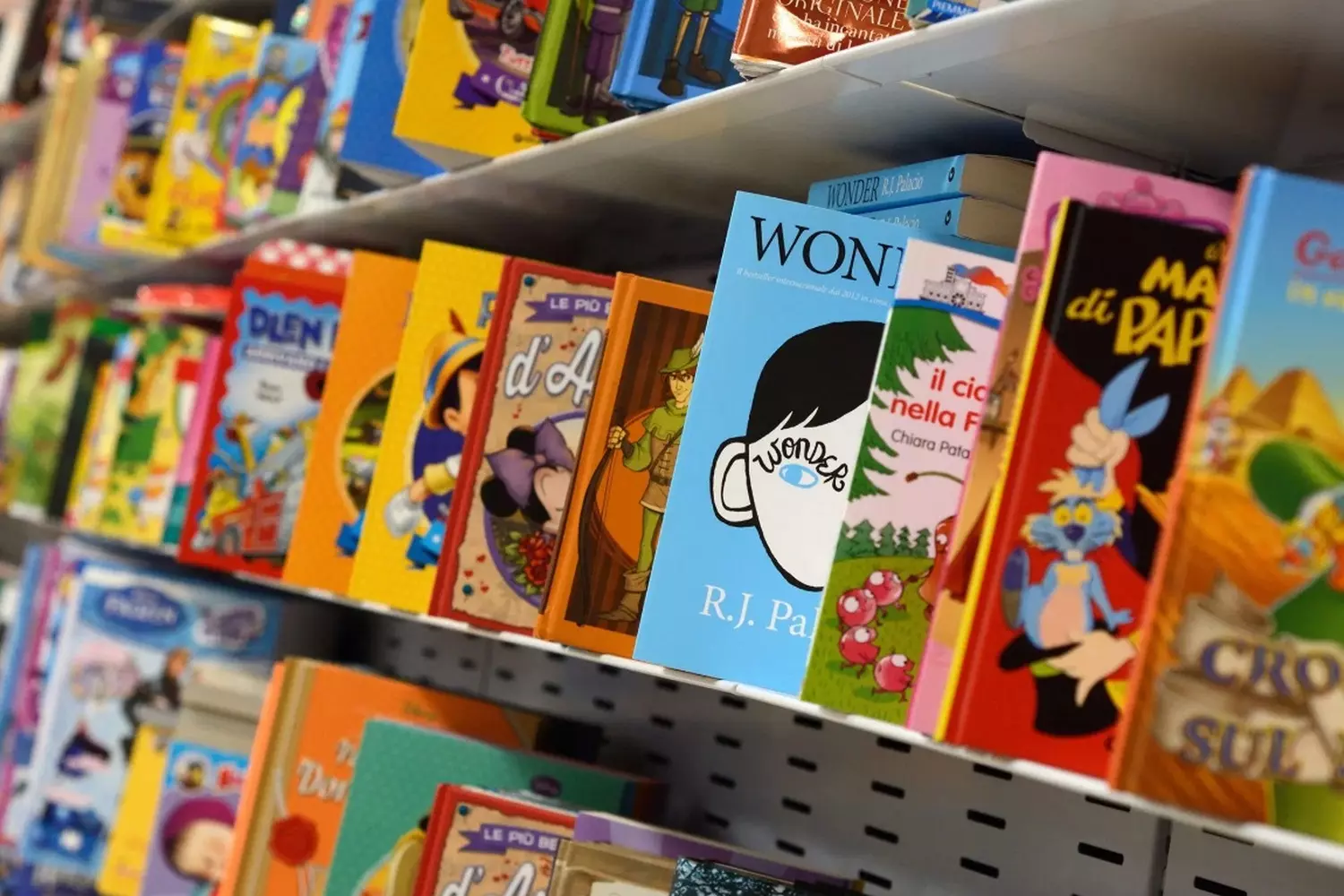
Rhymes, Rhythm, and Seuss: A Magical Journey Through Words
Dr. Seuss (real name Theodor Seuss Geisel) is not just a children's book author. He is a true master of words and rhymes, whose works have become an integral part of American culture and instilled a love for reading in millions of children around the world. When it comes to children's literature, Dr. Seuss' name is always mentioned first. His books are filled with vibrant characters, absurd stories, and, of course, magical rhymes that captivate even the youngest readers.
One of the features of Dr. Seuss' books is his incredible ability to create stories that are light-hearted and humorous, while also making readers reflect on important life values. His style is a symphony of sounds, letters, and rhymes that bring every word to life, making reading not only enjoyable but also meaningful.
For example, his famous book Green Eggs and Ham tells the story of how important it is to try new things, to overcome the fear of change, and to challenge old habits. The simple and fun plot teaches children to be open to new ideas and experiences.
Vivid Characters and Unique Worlds
The characters in Dr. Seuss' books are memorable from the very first glance. They are unusual, sometimes absurd, but always evoke laughter and affection. The character Sam-I-Am, for example, is not only amusing but also teaches children to understand that every person is unique, regardless of their appearance or strange habits.
His stories, such as The Cat in the Hat, immediately become favorites with children. The cat, with his mischief and tricks, symbolizes carefree fun, and at the same time, behind this image lies a lesson in responsibility and respect.
Dr. Seuss was always ahead of his time. His books touch upon significant social issues: respect for others, acceptance of differences, friendship, and love. Although he wrote his books in the early 20th century, their themes are still relevant today.
The book Horton Hears a Who! is not only about the lesson of not judging by appearances, but also about the importance of listening to and understanding others, even if they seem insignificant or invisible. In Dr. Seuss' world, even the smallest voices can be heard, and this is an important lesson for children.
Dr. Seuss' books are also interesting because they may appear simple, but they contain many hidden meanings. They can be read on different levels: children perceive them as simple, fun stories, while adults can see deep philosophical reflections on life, honesty, friendship, and much more.
His books often include rhymed poems that help children develop a sense of rhythm, memorization of words and expressions, and also encourage creative thinking.
Why Dr. Seuss' Books Are Perfect for Children
- Develop imagination
In Dr. Seuss' books, there are literally no limits to imagination. Impossible things become real, giving children space to create their own stories. - Teach important life lessons
Simple truths about honesty, love, respect, and friendship are presented in such a playful and effortless manner that children absorb them with great interest. - Enhance language literacy
Bright rhyming lines, repetitive phrases, and unusual words help children improve their pronunciation and vocabulary. - Build confidence
Dr. Seuss' characters often face difficulties but always find ways to overcome them, teaching children not to give up and to solve problems with optimism.
Dr. Seuss' most famous book, Green Eggs and Ham, is one of the best-selling books in the world. This book became so popular that it has been translated into numerous languages and is still used in educational programs. Interestingly, Dr. Seuss wrote this book, according to a promise to his publisher, using just 50 words!
Dr. Seuss left a bright legacy in literature that will remain relevant for many years to come. His books are not just stories for children; they are entire philosophical reflections wrapped in fun rhymes and amusing characters. Today, his books continue to bring joy to generations of children, providing them with valuable life lessons.
Thus, Dr. Seuss' books are an ideal way to introduce a child to the world of literature while also teaching them essential life values.
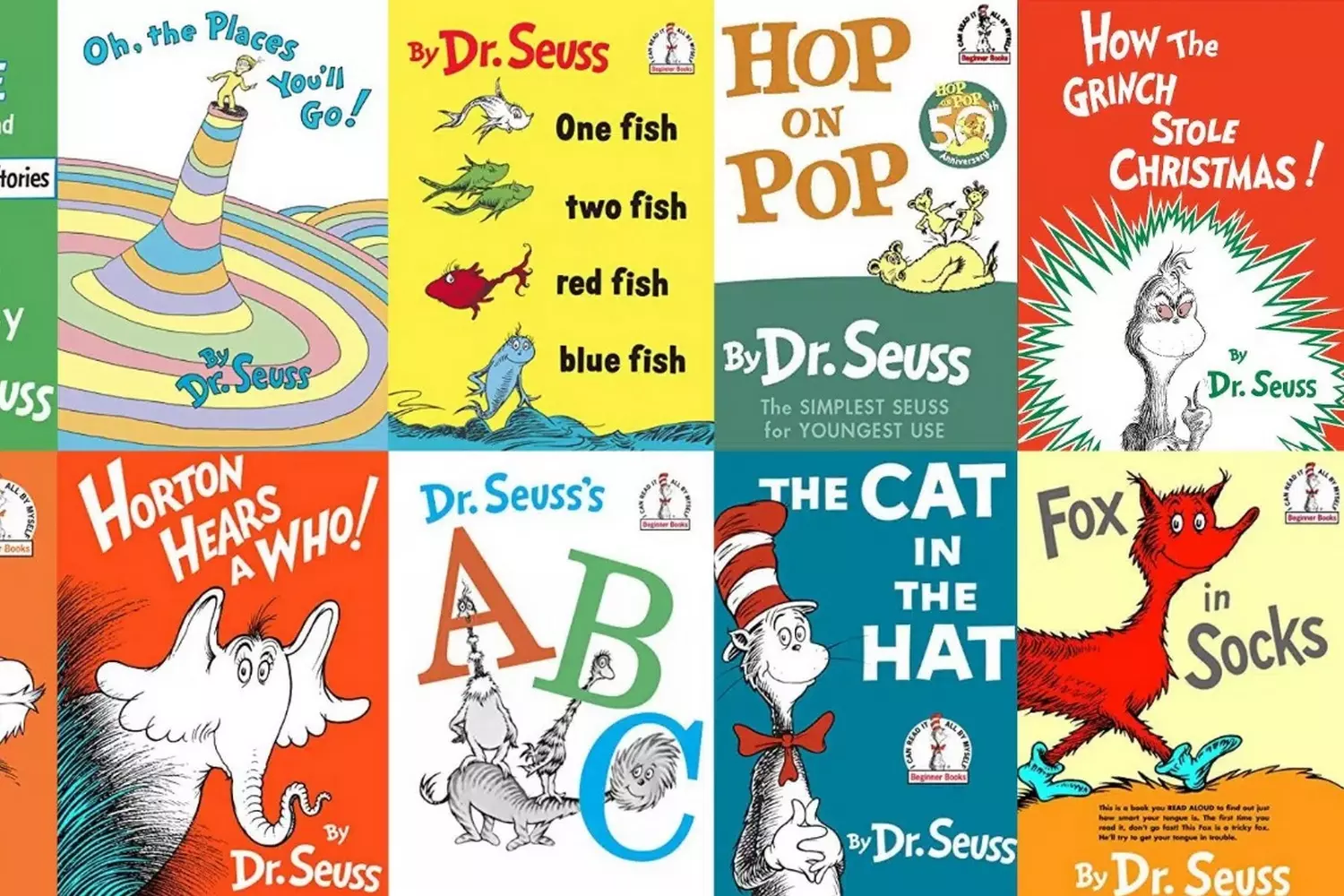
Shel Silverstein: Whimsical Worlds in Poems and Drawings
Shel Silverstein is a name that instantly brings to mind quirky, sometimes absurd poems that make readers both smile and reflect. Silverstein became a cult figure in children's literature, and his books are not just picture stories, but true works of art that appeal to children and adults around the world. What is the secret behind the success of these books, and why do they continue to be beloved by generations of readers?
Shel Silverstein became famous for his ability to combine simplicity and depth in a single work. His poems and illustrations seem light-hearted and playful, but in reality, they hide important life lessons, deep philosophical reflections, and touching stories. Even in the simplest texts, there is a hidden meaning that draws attention and keeps both adults and children coming back to these books again and again.
- 01. The Infinite Magic of Poems
Each of Silverstein's works is a story where the music of rhymes, unexpected plot twists, and colorful characters create a unique atmosphere. In Silverstein's books, there are no boring or stereotypical moments. For example, in his famous book The Giving Tree, Silverstein tells the story of a tree that gives all of its love and help to a boy, who continues to take without giving anything back. This is a story about selfless love, sacrifice, and growing up, which evokes the strongest emotions in readers.
In Shel's poems, there is always room for humor, surprises, and unexpected conclusions. The book Where the Sidewalk Ends offers a journey through a fantastic world, where every step is a new discovery, and life itself is presented as an amazing adventure. The book is filled with whimsical illustrations and rhymes, making it captivating for children, while adults can find in it deep reflections on the path each person chooses in life. - 02. The Importance of Illustrations: The Magic of Drawing
Another feature of Shel Silverstein's books is that the illustrations are not just an addition to the text, but an inseparable part of it. They tell stories just as well as words. Shel's illustrations are wonders of minimalism. He used simple yet expressive lines, sometimes with elements of absurdity, to bring his world to life with brightness and individuality.
His drawn characters often appear a little strange, but it is these oddities that create a special atmosphere where imagination runs wild. Shel could draw a small tree with human eyes or a giant cat talking to children. These drawings are vividly memorable and become visual metaphors for the deep themes explored in his books. - 03. Silverstein and Philosophy
Although many of Shel Silverstein's books seem light and playful, they are filled with important lessons that should not be forgotten. The Giving Tree is one of those books that makes readers think about true love and sacrifice. This book teaches children to value relationships and realize that it's not only about what we receive from others, but also what we can give in return.
In A Light in the Attic, Silverstein presents poems that address serious questions such as childhood freedom, identity, and self-determination. In his characteristic style, Silverstein raises topics of self-acceptance and self-expression, prompting young readers to think about their place in the world. - 04. Children and Adults: Equal Readers
For Silverstein, there was no distinction between what is interesting for children and what is important for adults. His books are equally enjoyable for both children and adults, as many of the topics addressed in his works are relevant for people of all ages. Adults can see the depth in his poems that children might not fully understand, while children enjoy the playful stories and vibrant pictures. - 05. Shel Silverstein in Children's Hearts
One of the most unique features of Shel Silverstein's books is their ability to touch readers on an emotional level. These books never leave readers indifferent: they evoke laughter, smiles, tears, and deep thoughts. The seemingly light poems and simple illustrations hide an incredible power to impact hearts and minds. Many of his works are small philosophical treatises on life, love, growing up, and meaning.
Interesting Fact: Shel Silverstein not only wrote books but also composed songs. He is the author of the hit A Boy Named Sue, performed by Johnny Cash. Such a creative range is surprising and inspiring — it is precisely why his books resonate so easily with readers' hearts.
Popular Books by Shel Silverstein
- The Giving Tree
A story of love, sacrifice, and growing up that touches on the deepest feelings and makes readers think about what is important in human relationships. - Where the Sidewalk Ends
A collection of poems and illustrations that invites readers on an incredible journey through imaginary worlds. - A Light in the Attic
Another collection of poems in which Shel Silverstein touches on themes like the search for meaning in life, freedom, and self-expression.
Shel Silverstein's books are not just children's literature, they are true works of art that penetrate deep into the soul. The simplicity of his poems and illustrations hides deep thoughts and philosophies that are accessible to everyone. These books teach important life lessons, offer unusual, sometimes even absurd, but always significant stories, and will remain in the hearts of readers for a long time.

Growing Up with Beverly Cleary’s Beloved Characters
is one of the most beloved American authors whose books have become true classics of children's literature. Her characters are as real and multifaceted as children themselves. By reading Cleary's books, kids feel that their emotions and problems are reflected in the stories, and sometimes even solved through kindness, courage, and loyal friends. began writing books for children in the 1950s. She drew inspiration for her works from her own childhood. Her works are not only interesting and captivating, but also filled with important life lessons. Many of Beverly Cleary's books tell the stories of how children learn to understand and accept themselves and others, how they cope with difficulties, and grow while discovering the world around them. Cleary focused on moments that children can experience—whether it's finding friends, overcoming school difficulties, or dealing with relationships with parents. In this way, her books turn out to be remarkably close and relevant for generations.
Famous Books about Ramona and Henry
One of the most famous book series by Beverly Cleary is the story of Ramona Quimby. Ramona is an energetic and restless girl who always has a backpack full of problems and adventures. But thanks to her perseverance and kindness, she always finds a way to solve them.
- The books about Ramona are primarily a story about growing up. The child teaches children to appreciate the uniqueness of their personality and accept others despite their oddities or difficult characters. The theme of growing up and finding one's identity is particularly strong. While Ramona faces the same problems as many children, she never loses her sincerity and optimism.
- One bright example is the book "Ramona the Pest", in which the girl faces difficulties at school and at home, but finds the strength to overcome them with her characteristic rebelliousness.
No less popular is the series of books about Henry Huggins, another hero of Beverly Cleary. Henry is an ordinary boy, but he has a huge heart and a desire to always do things right, even if it sometimes leads to unpredictable consequences. Henry represents the typical child who doesn't always find easy solutions but is always ready to act. In the book "Henry Huggins", Henry, with his simple and understandable concerns, reminds many boys that they are not alone in their worries and that growing up is not just about gaining experience but also learning to understand oneself and others. What unites the characters of Beverly Cleary is their real experiences, both as young children and older age groups. Each of the author's books carries an important message that can be useful to children in their lives. In addition to the theme of growing up, Cleary touches on such important issues as self-acceptance, building friendships, and the value of honesty. Not all of Cleary's stories are full of joy—her books often feature difficulties and sadness, but as a rule, they end on a positive note, emphasizing the importance of believing in oneself and maintaining a positive outlook. These books emphasize how important it is to find one's true nature and understand that every person is unique, no matter what happens to them.
Why are Beverly Cleary's books so important for children?
- 01. Simplicity and accessibility of language
Cleary uses simple, understandable, and lively language, making her books accessible to children of different ages. This helps children easily follow the plot and develop their reading skills. - 02. Real problems and concerns
She is not afraid to describe the moments children face, such as problems at home, difficulties with friends, or worries about their own significance. This makes her characters alive and relatable to readers. - 03. Lessons of growing up
Beverly Cleary's books are not only entertainment but also education. Her characters teach children important life lessons: to be honest, friendly, help those in need, and most importantly—not to be afraid to be themselves. - 04. Friendship and family
The themes of friendship, family, and relationships are very close to children. All of Cleary's books highlight the importance of these values, teaching how important it is to be there for those who love you.
Beverly Cleary's books you should read
- "Ramona the Pest"
The continuation of the story about Ramona, the lively but restless girl. - "Henry Huggins"
The first book about Henry and his adventures. - "Ramona and Her Father"
An important book about family, where Ramona faces the difficulties of growing up. - "The Mouse and the Motorcycle"
An amazing story about a little mouse who learned to ride a motorcycle and became a true hero.
Beverly Cleary created a world where children can see a reflection of their own lives. Her books are full of laughter, adventures, and, of course, lessons that teach kindness, honesty, and loyalty to friends. They teach that growing up is not only about finding oneself but also about supporting others who can help overcome any difficulties.
That is why Beverly Cleary's books have been read and loved for decades. These are books that are always relevant and accompany children at an important stage of their development.
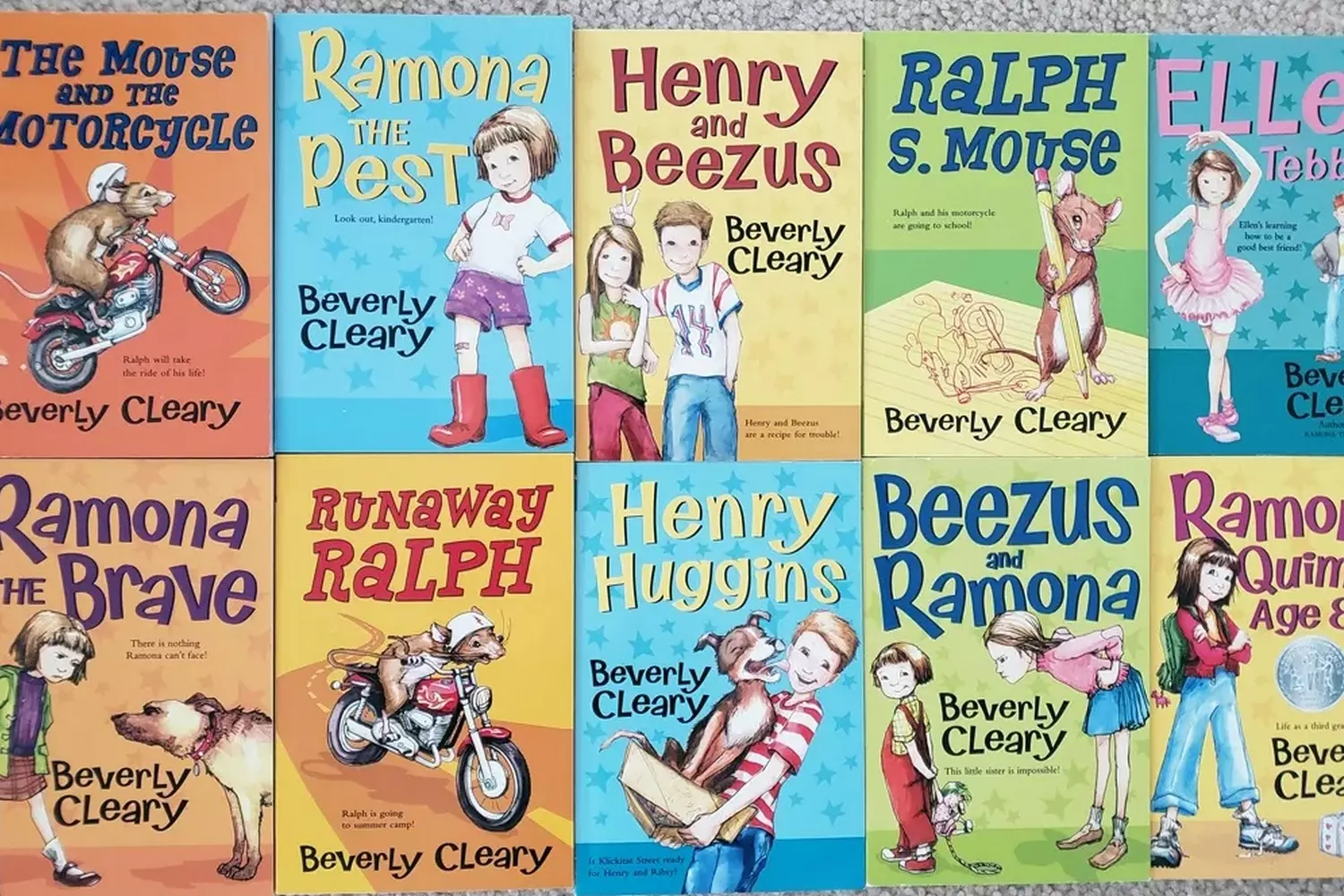
Lemony Snicket: Uniquely Strange and Utterly Captivating
Lemony Snicket is not just a fictional character, but a pen name for the American author Daniel Handler. His books about the misfortunes of the Baudelaire family — the “A Series of Unfortunate Events” — have gained worldwide popularity and have become a true cultural phenomenon. The distinctive feature of these books is their humor, gloom, absurd adventures, and deep philosophical reflections, which appeal to both children and adults.
Lemony Snicket is a narrator whose name has become synonymous with sadness, mystery, and adventure. He himself is not a central character, but his role in the series is extremely important. Snicket tells the story of the Baudelaire children, who face a multitude of unfortunate events, starting with the tragic death of their parents and ending with the endless attempts of the sinister Count Olaf to seize their inheritance. But Snicket tells this story in a special tone — his narration is full of sarcasm, irony, and appropriate tragicomedy, which makes readers both laugh and cry at the same time.
- The story revolves around three children: the eldest sister Violet, the middle brother Klaus, and their baby sister Sunny. After their parents die in a fire, the children are placed under the guardianship of their uncle, Count Olaf, who turns out to be a cruel, merciless person willing to do anything to get their fortune. His plans are not limited to a simple desire to get rich — he intends to use the children, deceiving and manipulating them, to secure their inheritance.
But despite all the hardships and dangers that the Baudelaires face, they always find their way out of the darkest situations. All of this happens thanks to their intelligence, courage, and love for each other. In each book, they encounter a new misfortune, but despite everything, they remain optimistic and never lose hope. - What makes Lemony Snicket's books so special? First of all, it is the unique writing style that blends dark humor and gentle sadness. Snicket, as a narrator, often addresses the reader, warning them about what will happen next and immediately hinting at the absurdity of the events. He tells about the most tragic moments with sarcasm and irony, turning tragedy into comedy and allowing children to understand that even in the darkest situations, there can be a bright moment.
Example: In one moment, Snicket warns that all the events described in the books are absolutely tragic, but still encourages readers to keep reading despite all the misfortunes. This creates an atmosphere where tragedy becomes a part of normal life and one can learn to deal with it.
Themes and Philosophy of Lemony Snicket
- 01. The Power of Family
In the Baudelaire books, there is always a central theme — the importance of family. Even when the children face dangers, they always support each other, helping them not to give up in the face of adversity. This reminds readers that the most important connections are not money or power, but love and support from loved ones. - 02. Overcoming Hardships
Despite the constant trials the children face, they always strive to find a way out. Every misfortune and every obstacle life throws at them becomes another opportunity for their growth. This philosophy teaches readers that one should never give up and that everyone can overcome difficulties if they are not afraid to face them head-on. - 03. Sarcasm and Life Lessons
Lemony Snicket never shies away from telling the truth, even if that truth is unpleasant. His sarcasm and dark humor make readers think about the difficult aspects of life. He teaches children lessons about honesty, justice, and willpower, but he does so not through boring lectures, but through vivid and engaging stories filled with irony. - 04. Life Wisdom
Each book in the series teaches readers something important about life. Snicket, despite his tendency towards pessimism, shows how important it is to keep moving forward, not dwelling on failures. His books teach readers to accept the world as it is and to go through life with optimism, despite all its setbacks. - 05. Timeless Relevance
Although the Baudelaire books were written over 20 years ago, their themes — fighting injustice, family support, overcoming difficulties — are still relevant today. These books address important life and relationship issues, making them interesting and useful for both teenagers and adults. - 06. Genre Blending
The books about Lemony Snicket are a unique combination of children’s literature, mystery, comedy, and tragedy. They can be both sad and funny, light and deep. This balance makes them incredibly appealing to a wide range of readers.
The books of Lemony Snicket, especially the "A Series of Unfortunate Events", are not just stories about the unfortunate events in the lives of children, but also deep reflections on life, human nature, resilience, and family values. Despite their gloomy atmosphere, they teach children to believe in themselves, fight against difficulties, and not be afraid of challenging situations. Snicket’s light yet witty style makes these books ideal for those who are looking for not only entertainment but also life lessons in literature.
With his philosophical musings, dark humor, and ability to reveal essential human qualities through vibrant characters, Lemony Snicket remains one of the most beloved authors for both children and adults around the world.
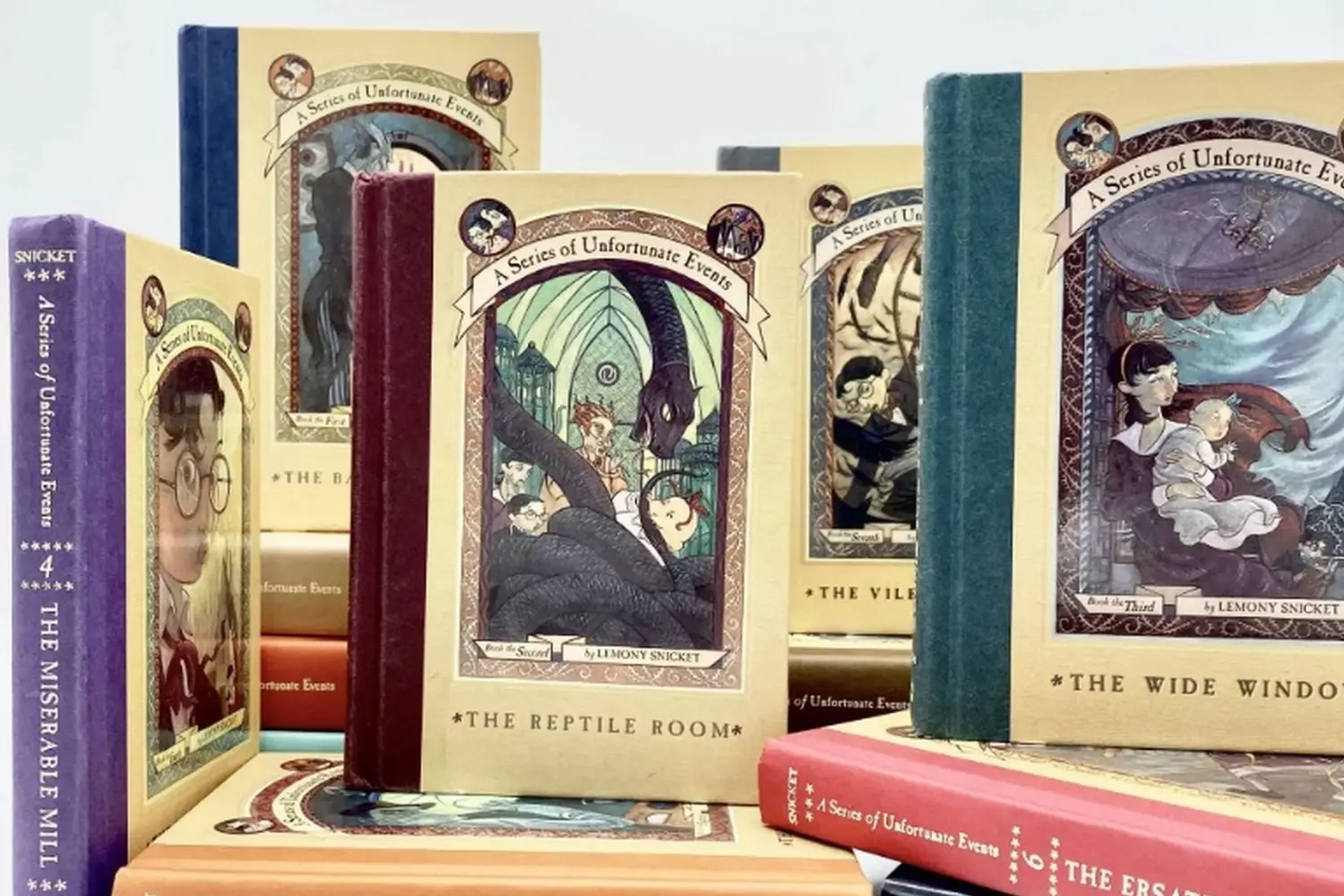
Eric Carle: Creator of Bright and Playful Stories for Young Minds
Eric Carle is a name that everyone knows who has ever opened a children's book. This American writer and illustrator was able to turn simple ideas and images into bright, captivating stories that win the hearts of children all over the world. His books, in particular, have become beloved thanks to vibrant illustrations, easy-to-understand plots, and a magical way of capturing a child's attention from the very first page.
Eric Carle was born in 1929 in New York and was surrounded by art from an early age. His creativity was a result of a deep understanding of how children perceive the world. Carle dedicated his entire career to children's literature, and his works have left an indelible mark on the world of books for young children. His simple style, bright colors, and innovative illustration techniques became his trademarks, and his works quickly became favorites among children and parents alike.
His most famous book is "The Very Hungry Caterpillar" (The Very Hungry Caterpillar), which has become a true classic over the years and one of the most popular works for younger audiences.
The uniqueness of Eric Carle's works lies in the fact that his books do not simply tell stories, they bring the world around to life. Carle's fame is largely due to his innovative illustrations, which become part of the narrative. He used hand-cut appliqués, bright colors, and various textures to create unique images that are easily perceived even by the youngest children.
One of the most distinctive features of his illustrations is the combination of simple shapes and rich colors. The bright and contrasting images not only attract attention but also help children develop an understanding of color and shape. All of this makes Carle's books not only entertaining but also educational.
Eric Carle's Most Famous Books
- 01. "The Very Hungry Caterpillar" (The Very Hungry Caterpillar)
This book is one of the best-selling children's books in the world. It tells the story of a little caterpillar that begins its journey in a very hungry state and, as it progresses, transforms into a beautiful butterfly. This book helps children understand basic concepts like the days of the week, counting, and metamorphosis, and with each turned page, it captures more and more attention from young readers. The uniqueness of this book lies in its page shape, where children can "touch" the caterpillar by making holes in the pages, as if they themselves are going through the transformation process. - 02. "The Secret Birthday Message" (The Secret Birthday Message)
In this book, Carle introduces children to the world of color and creates an engaging puzzle that fascinates not only young readers but also their parents. A boy and a girl try to decode a secret message, and the whole book becomes a real quest, urging children to pay attention to every detail and make their own conclusions. - 03. "Does a Kangaroo Have a Mother, Too?" (Does a Kangaroo Have a Mother, Too?)
This book helps children not only learn more about animals but also familiarize themselves with the concept of kinship and family bonds in the natural world. The questions posed in the book touch on important moments of family, care, and love, allowing children to form an understanding of the importance of relationships.
Why Are Eric Carle's Books So Popular?
- Simple and Accessible for Children
Carle knew how to make his books so accessible and simple that even young children could easily understand their meaning. Simple stories with bright illustrations that do not overwhelm children with unnecessary details, yet teach important things about the world. - Developmental Elements
Each of Carle's books is not just entertainment but also education. He teaches children not only about numbers, colors, or the days of the week but also valuable life lessons, such as the importance of curiosity, openness, and care for nature. - Immersion in the Atmosphere
Carle created stories that captivate children's attention. His books are perfect for drawing little ones into reading because they quickly immerse them in a magical world, leaving no room for boredom. Children simply won't want to close such a book — they will eagerly turn the pages. - Interactivity and Engagement
One of the main reasons for the popularity of Carle's books lies in their interactivity. Books like "The Very Hungry Caterpillar" use shapes and holes in the pages, which turn reading into an engaging process. Children don't just read, they become part of the book, making them actively involved in the story. - Eric Carle's Cultural Legacy
Eric Carle's works have influenced not only children's literature but also visual culture as a whole. His approach to illustrations has inspired many artists and authors around the world, and he has become one of the most recognizable authors globally. Many of Carle's books have been translated into dozens of languages, and his book "The Very Hungry Caterpillar" has become a part of culture and entered history as one of the most successful children's books of all time.
Eric Carle is not just an author who tells stories. He creates entire worlds in which children can fully immerse themselves. His books teach important life lessons, foster development, and make the reading process exciting and joyful. These books are a bright, joyful immersion into the world of creativity, education, and imagination, which is why they remain relevant and beloved even decades later.
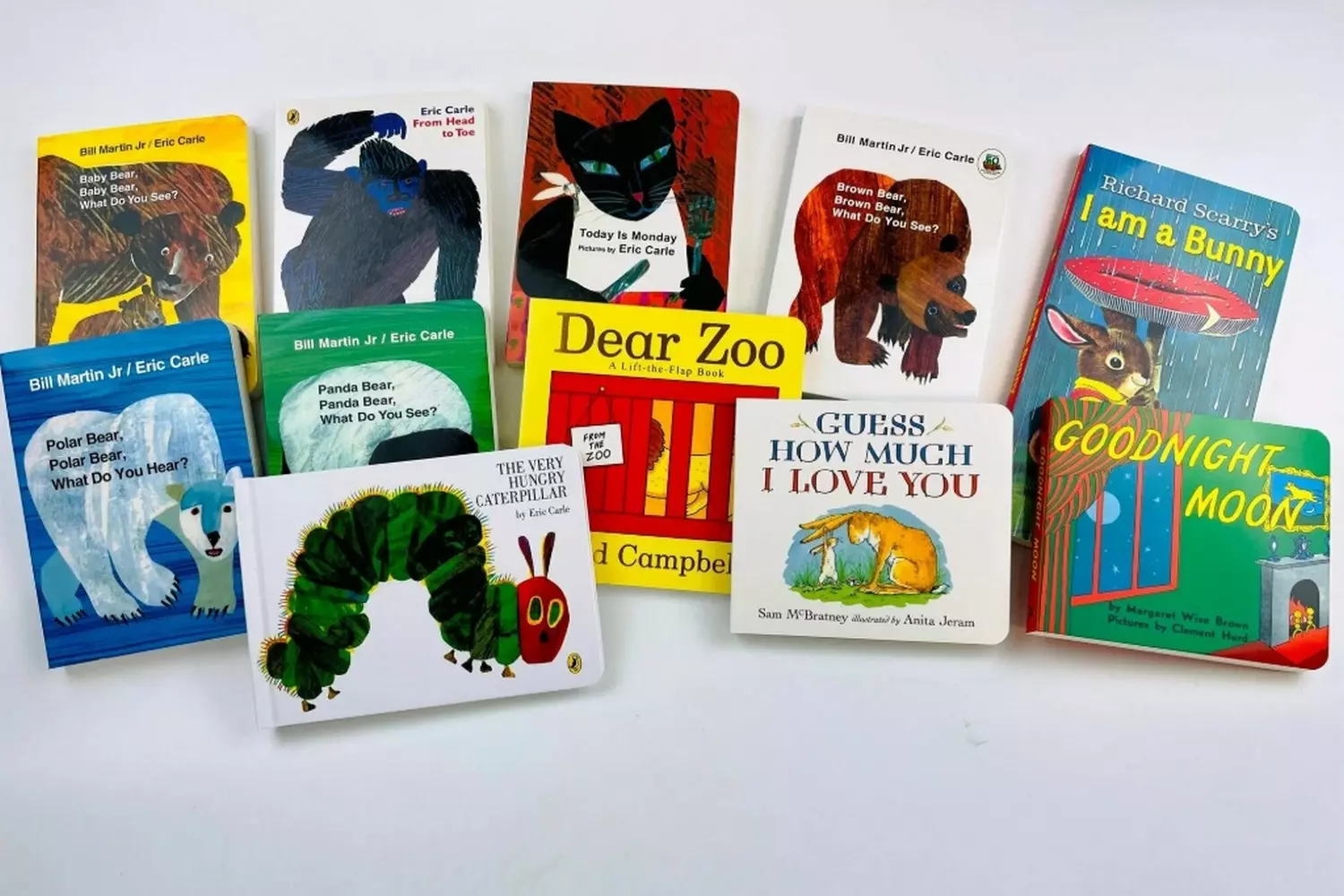
Where the Wild Things Are" — A Story That Captivates the Mind
"Where the Wild Things Are" — a work that has become a true classic of children's literature and one of the most famous books by Maurice Sendak. First published in 1963, this story quickly won the hearts of children and adults worldwide. To this day, it remains popular, and its themes, illustrations, and characters continue to inspire readers of all ages.
"Where the Wild Things Are" tells the story of Max, a little boy who, after being sent to his room as punishment, decides to embark on an incredible journey. Instead of sitting alone, Max finds himself in a land inhabited by wild things — terrifying yet simultaneously kind and amusing creatures. Here, amid their loud and funny antics, he becomes the king, the ruler of these wild beings.
However, despite all their attention and enthusiastic applause, Max soon realizes that he actually misses home and his mother. And although the wild things want to keep him, the boy decides to return home, where love and comfort await him.
- Maurice Sendak created a work that not only amazed with its depth but also proved to be innovative in terms of illustrations and storytelling. At first, it might seem like a book about childhood fantasies, but in reality, it addresses more serious themes — loneliness, self-discovery, and the return home.
- Sendak plays very subtly and skillfully with the concepts of fear and power. The wild things, while appearing intimidating, are not evil. They symbolize something more complex — perhaps manifestations of our own fears, emotions, or desires. But importantly, in the end, Max, despite his power over the wild things, decides to return home because true strength lies in love and family relationships.
- The wild things in the book play an important role. They are not just characters Max encounters. At some point, they become his mirror, reflecting the boy's inner experiences. Max, who initially starts by "showing" his emotions in the form of wild fantasies, eventually finds peace when he returns to the real world, where he is loved and understood.
- Max's story is a kind of metaphor for growing up, taking responsibility for one's actions, and realizing that sometimes, despite all the adventures and freedom, we return to where we are loved and supported. "Where the Wild Things Are" teaches that, perhaps, we are all looking for our "wild" side, but true happiness and peace come only when we understand that our home is the place where we are loved and awaited.
- The illustrations in "Where the Wild Things Are" are not just pictures to accompany the text. They are an independent element that enhances and complements the meaning of the book. Sendak's simple yet expressive style conveys the richness of the hero's inner world, his emotional experiences, and even his mood. The color palette also plays a significant role: the dark tones at the beginning of the book create a sense of anxiety and uncertainty, while when Max returns home, they are replaced by warmer and cozier ones, symbolizing safety and peace.
- Each illustration in the book is deeply crafted and full of symbolism, and even if children cannot immediately grasp all the nuances, they still feel a connection with the characters and Max's emotions.
Why has the book become so significant?
- 01. The theme of self-discovery and finding oneself
"Where the Wild Things Are" is not just a fairy tale about how a boy defeats monsters. It is a philosophical story about growing up and finding oneself, about understanding and accepting one's emotions. The time spent with the wild things symbolizes the complex process of self-reflection that every child needs in order to learn how to cope with their own fears. - 02. The courage and power of imagination
The book teaches that imagination and fantasy are powers. It is through his imagination that Max can escape to the world of the wild things, become their king, and eventually overcome his inner fears. This message is about the fact that each of us has the strength to cope with difficulties and overcome them. - 03. Understanding emotions
Young children often cannot express or even understand their emotions. Sendak's book gives them a language for these feelings, showing how important it is to realize that emotions such as anger, fear, or sadness are not bad or dangerous. These are natural feelings that need to be understood and managed. - 04. Children and adults: a book for all ages
Although "Where the Wild Things Are" is a children's book, its message is deep and meaningful for adults as well. It reminds us that, despite adult responsibilities, there is still the same boy inside each of us who sometimes seeks his way among wild things. For adults, the book also offers an important lesson about the importance of returning home to love and care.
"Where the Wild Things Are" was recognized as one of the greatest children's books of all time. In 1964, it won the prestigious Caldecott Medal, and since then, its story has remained relevant. The book has been adapted into a musical, theatrical productions, and the famous film of the same name. Its impact on culture is enormous, and it continues to inspire artists, writers, and directors.
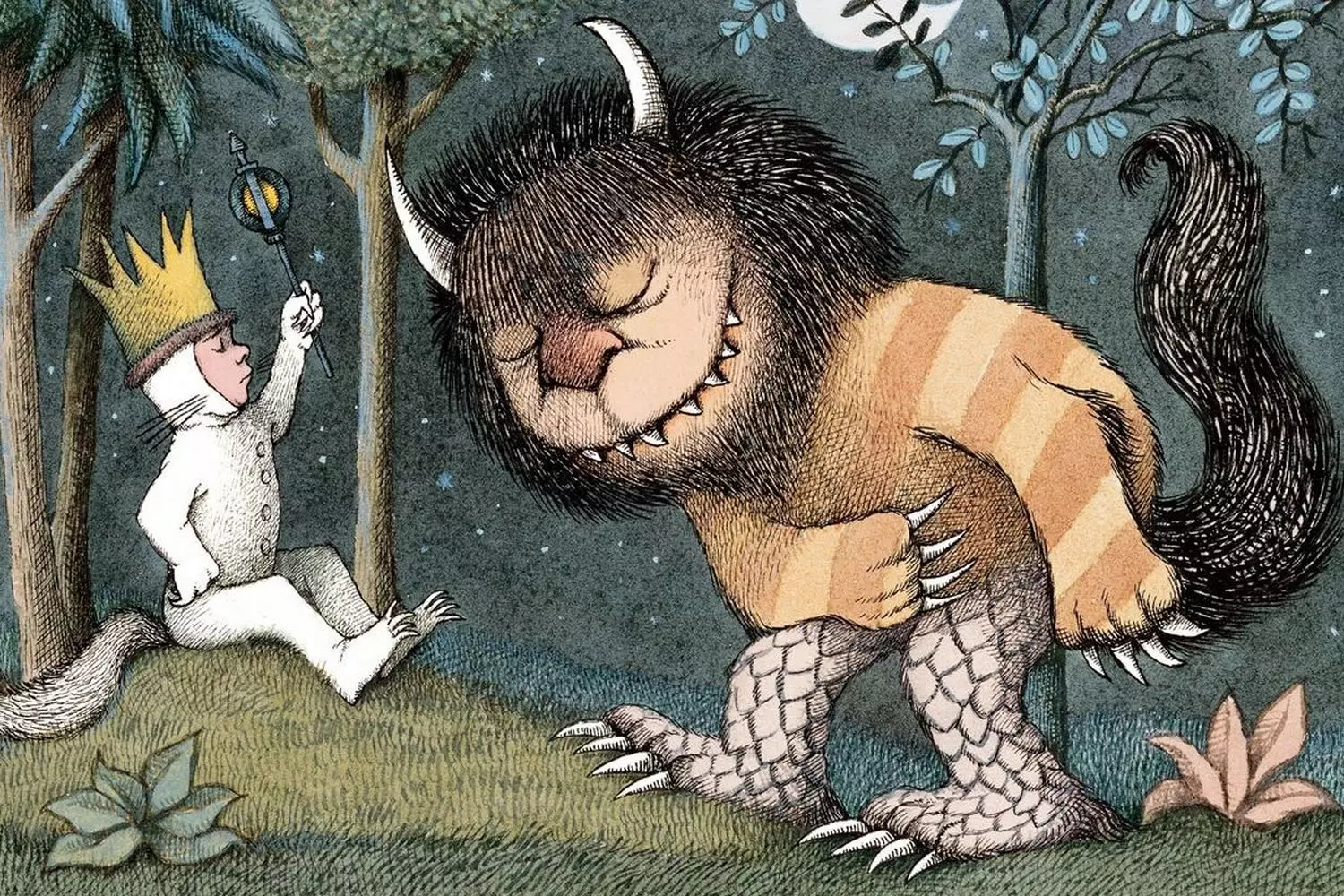
Pollyanna — A Story About the Joy That Can Change Everything
"Pollyanna" is a classic novel by American author Eleonora Porter, first published in 1913 and since then has won the hearts of countless readers worldwide. The book tells the story of a girl whose relentless desire to find joy in any circumstance influences the lives of everyone around her. It is a story about how a positive outlook on life can transform the world and change people.
The main character, Pollyanna, is an orphan who comes to a small town to live with her strict and unemotional aunt, Aunt Polly Harding. On the surface, Pollyanna’s life does not seem joyful: she has lost her parents, lives in poverty, and her aunt has a rather severe character. However, despite all the hardships, Pollyanna never loses her optimism and tries to find the positive aspects even in the most difficult situations.
The story begins when the girl teaches the local residents a game she created with her parents. The game involves finding at least one reason for joy in any situation. From the very start of the book, she finds joy even in the most absurd circumstances. For example, when she doesn't get the doll she wanted, she is happy because now she has the opportunity to play with something else.
This ability to rejoice in the little things becomes a real revolution for the townspeople, who soon begin to notice how their own lives are changing thanks to Pollyanna. With each day, more and more people begin to play this game with her and discover joy even in the most mundane aspects of life.
Why has the book become so popular?
- A unique approach to life: positive thinking
One of the main themes of the book is the concept of the "joy game" that Pollyanna uses to change not only her life but also the lives of those around her. This game teaches to find the bright side in any situation, no matter how difficult life may be. Pollyanna proves that even in the hardest circumstances, there is always a reason to be happy. Her approach to life is not just an innocent optimistic view of the world but a powerful and profound message about the importance of having the right attitude towards what happens. She does not ignore problems but teaches to see opportunities and be grateful for small joys. This gives an incredible power — the ability to change the world around you. - The influence on others
Pollyanna turns out to be not only a strong personality but also a source of inspiration for everyone around her. Her endless optimism and kindness are contagious: she transforms an entire community. Through her interactions with the townspeople, the book shows how important it is to show empathy and attention to others, because even a simple kind word or act can light up even the darkest corners of life. Pollyanna turns a gloomy, closed community into a friendly and open society where people start appreciating each other and their life moments. This transformation occurs not due to any external changes but purely through the power of positive thinking. - The role of family and love
Although Pollyanna did not have the opportunity to grow up in a complete family, the love she gives to those around her knows no bounds. The book also touches upon the importance of family relationships. Pollyanna’s aunt initially views her role as an obligation, but gradually through Pollyanna, she begins to realize the value of love and care. The relationship between Pollyanna and her aunt becomes a metaphor for how emotional alienation can be overcome and how warm and sincere family relationships can be restored. It is this love, presented through the lens of joy and kindness, that becomes the foundation of her story. - Life lessons for children and adults
"Pollyanna" is not only a book for children but also an important work for adults. It teaches us to remember that we are responsible for our thoughts and emotions and that by changing our reaction to what happens, we can change our life. The book reminds us that it doesn't matter what happens to us; what matters is how we react to it and the choices we make.
The first editions of "Pollyanna" were accompanied by illustrations that were as vibrant and inspiring as the story itself. These pictures not only decorated the text but also helped to reinforce the main themes of the book — joy, kindness, and the bright atmosphere surrounding Pollyanna. The illustrations do not just complement the plot; they provide an opportunity to understand the emotional state of the characters and the atmosphere of their transformations more deeply.
The impact of "Pollyanna" on culture and society is immeasurable. The book has inspired generations to adopt a positive view of life, and the heroine herself has become a symbol of kindness and optimism. The story of a girl who never gave up in the face of adversity showed how important it is to maintain faith in oneself and the potential of those around us, even when the situation seems hopeless.
In addition, in honor of Pollyanna, a special award called the "Pollyanna Award" was created, which is given for the manifestation of true optimism and the spirit of kindness.
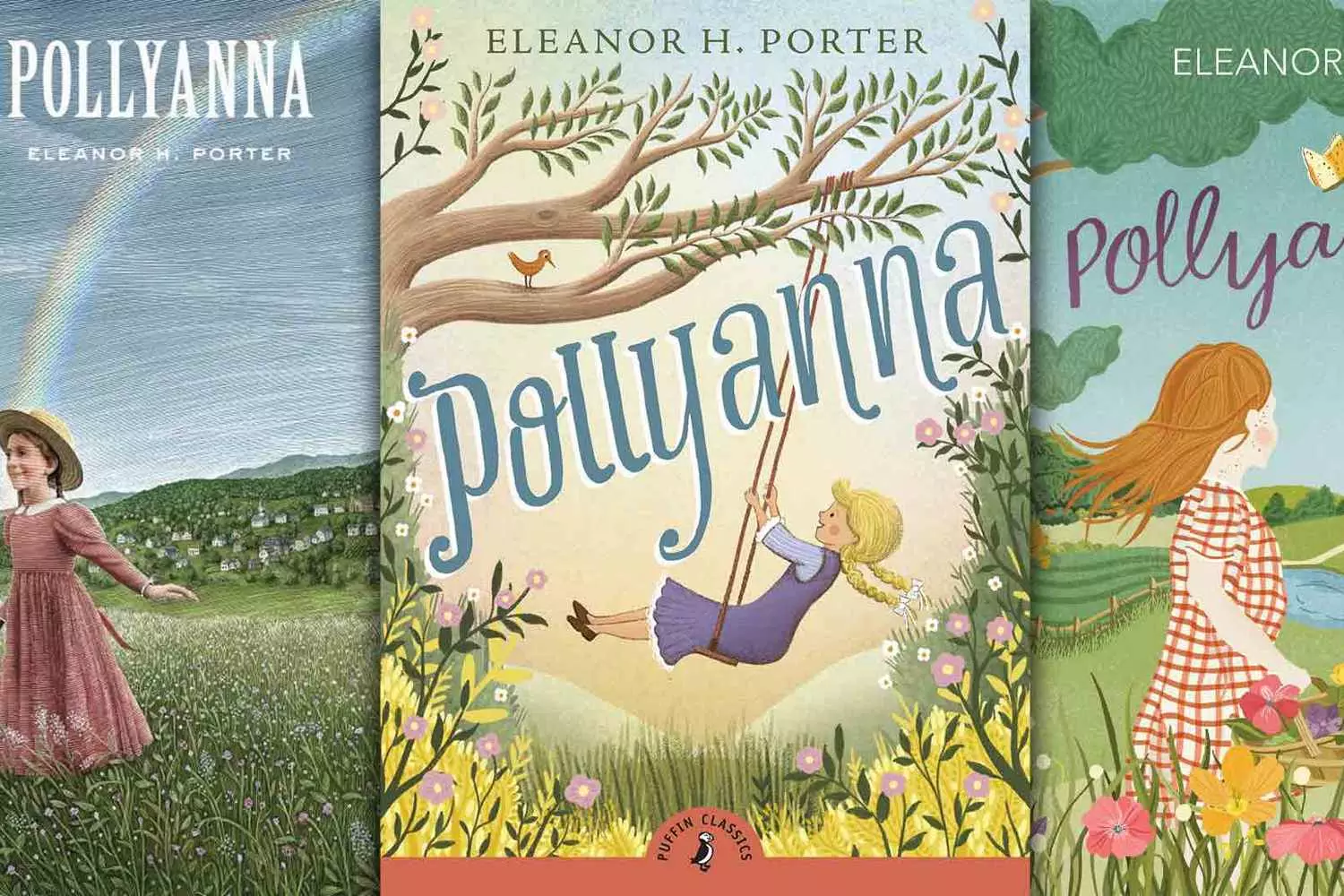
Charlotte's Web — A Heartwarming Story of Friendship, Sacrifice, and Miracles
"Charlotte's Web" is one of the most beloved and famous children's books by American author E.B. White, first published in 1952. It is a heartwarming and wise story about animals, love, self-sacrifice, and the miracle that can happen when someone truly believes in another. The book is about the friendship between a little girl, a piglet, and a clever spider. It teaches children the importance of kind deeds and touches on themes of life and death, overcoming fear, and the power of hope.
The main character of "Charlotte's Web" is a little pig named Wilbur, who is born on a farm. Due to his weakness and frailty, he is soon on the brink of death as the farmer decides to sell him for food. However, his life changes unexpectedly thanks to an amazing and incredibly wise spider named Charlotte. Charlotte, seeing how helpless and lonely the piglet is, decides to save him. She spins incredible messages in her web, such as "Some Pig" and "Terrific," which attract people's attention and help Wilbur avoid his terrible fate.
The story, in which Charlotte, despite her death, continues to care for her friend and helps him, is full of deep philosophical reflections. It serves as a reminder of the value of love, how important it is to care for one another, and not to be afraid of doing good, even when it requires sacrifice.
Why does "Charlotte's Web" remain an eternal classic?
- 01. Theme of Friendship and Self-Sacrifice
One of the central themes of the book is true, sincere friendship that can overcome any barriers. Charlotte, despite her short life, finds the strength to sacrifice her time and life to save Wilbur. This is not just a book about animals — it is a story about how true friendship, based on self-sacrifice, can work miracles and change the world around us. - 02. Life and Death: Challenging Topics for Children
Charlotte dies at the end of the book, and this theme is undoubtedly one of the most difficult and important for children's understanding. White masterfully conveys the importance of life cycles and the inevitability of death while ensuring that children are not left in fear or confusion. Charlotte dies, but her legacy continues through Wilbur and the web she left behind. This is not a tragedy but a lesson that every person or creature, no matter the length of their life, leaves a mark on this world. - 03. Miracles and Belief in the Impossible
One of the brightest elements of the book is that Charlotte herself embodies wisdom and goodness. She believes that her actions can change the world around her, and through her actions, she proves that even a small creature like a spider can work miracles. This message is about how belief and actions can not only change the fate of one individual but also touch the lives of many others. - 04. Characters Who Evoke Sympathy and Understanding
Each character in "Charlotte's Web" has their own unique traits, and White skillfully develops them so that every reader can find a character to relate to. Wilbur is not just a piglet — he is a symbol of vulnerability, innocence, and the longing for love and acceptance. Charlotte, in turn, represents wisdom, compassion, and strength of spirit. Even characters like the farmer, the uncle, or other animals on the farm have their own value and play significant roles in the story, which makes them more human and relatable. - 05. The Power of Simple Acts
Charlotte saves Wilbur not through great miracles, but with a simple, yet clever act — by creating words in her web. This message is very important because it teaches that we don’t always need to perform great feats or possess enormous strength to make the world a better place. Sometimes, all it takes is a simple act of care, the ability to help, and faith in the better.
The illustrations by G.E. Schultz, who created the drawings for the first edition of "Charlotte's Web", play just as important a role as the text itself. Schultz creates a visual world that perfectly complements the atmosphere of the book. The simple yet expressive drawings make the characters and their emotions clear and vivid for young readers. The lightness and warmth of these illustrations help the reader empathize with the characters and deeply feel the emotions that the characters go through.
"Charlotte's Web" is not just a story for children. It is a book that teaches us the most important life lessons: how important it is to love and care, how necessary it is to be brave in the face of difficulties, and how essential it is to never lose faith, even in the darkest moments of life. These ideas are not only relevant for children but also for adults, who can extract wisdom from the actions of the characters and pass it on to their children.
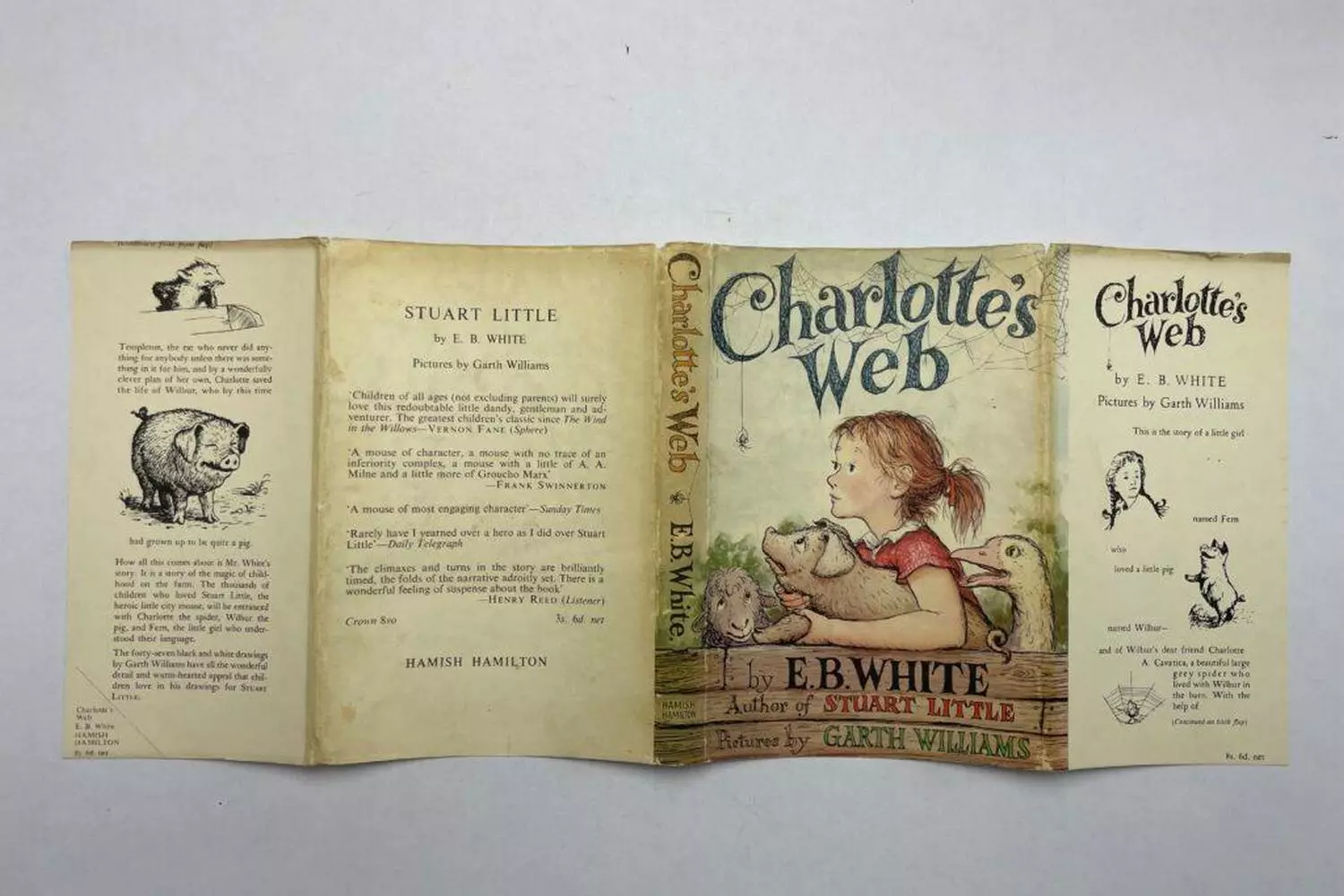
The Wizard of Oz — Magic, Adventures, and the Power of Friendship
"The Wonderful Wizard of Oz" (original title The Wonderful Wizard of Oz) is one of the most famous and beloved books by American author L. Frank Baum, first published in 1900. This captivating and emotional tale of a girl named Dorothy, who ends up in the land of Oz, has become not only a classic of children's literature but also inspired numerous adaptations, including musicals, films, and even modern craft projects. The story combines magic, fantasy, and profound philosophical lessons that remain relevant for both children and adults.
The main character of "The Wonderful Wizard of Oz", Dorothy, is an ordinary girl who lives with her uncle and aunt in Kansas. However, one day, her house is swept away by a hurricane and transported to the land of Oz, a mysterious and magical place inhabited by strange creatures and magical beings. Here, she meets unusual friends: the Tin Woodman, who dreams of having a heart, the Scarecrow, who wants a brain, and the Cowardly Lion, who desires courage.
Together, they embark on a dangerous and thrilling journey to meet the powerful Wizard of Oz, who, they believe, can grant their wishes. Along the way, they must face many challenges, encounter dangerous enemies, learn to work as a team, and understand that everything they need to fulfill their wishes is already within themselves.
Why is "The Wonderful Wizard of Oz" so popular?
- 01. Magic and Fantasy
"The Wonderful Wizard of Oz" is a story about magic, adventures, and the possibilities that open up to the heroes when they believe in miracles. The land of Oz is a world where anything is possible: talking animals, evil witches, wizards, and magical creatures. However, despite all this magic, the main characters begin to realize that true power lies within themselves, not in magical artifacts. This combination of fantasy with philosophical truths makes the book unique. - 02. Strong and Unusual Characters
Each of the book's characters is not just a caricature or symbol of some quality. The Scarecrow, Tin Woodman, and Cowardly Lion all seek something they believe is missing in themselves, but through their journey, through challenges and trials, they realize that all these qualities are already within them. Throughout the story, they teach us the importance of self-awareness, growth, and self-respect.
- Dorothy — an example of determination and loyalty to her beliefs, despite difficulties.
- Scarecrow — a symbol of reason and creativity. He thinks he lacks brains, but in reality, he shows extraordinary ingenuity and wisdom.
- Tin Woodman — an embodiment of compassion and a desire to be more human than he perceives himself.
- Cowardly Lion — the personification of fear and doubt, but he teaches us that courage is not the absence of fear, but the ability to act despite it.
- 03. Teachings about Inner Strength
One of the book's most important messages is that what we think is missing in us is often already present. For example, the Scarecrow could always think logically, but he didn't believe in his intelligence. The Tin Woodman was full of compassion and love, but he thought of himself as heartless. The Cowardly Lion was brave, but fear held him back. This lesson about inner strength and self-confidence makes the book especially relevant for both children and adults, helping to overcome internal barriers. - 04. Lessons of Friendship and Teamwork
The plot of the book clearly shows that true strength lies in cooperation. All the characters have their weaknesses, but by combining their efforts, they become invincible. Reading this book helps children understand the importance of working together, supporting each other, and solving problems as a team. It is a great lesson for developing social intelligence and leadership skills. - 05. Wisdom and Metaphors for Life
Every event in "The Wonderful Wizard of Oz" is filled with symbolism and lessons. For example, the journey in search of the Wizard is a metaphor for life's journey, where we seek external solutions to our internal problems. However, in the end, Dorothy and her friends realize that the answers were inside them all along, and everything they were searching for already belonged to them. - 06. Magical Elements and Vivid Imagery
It is also important to note the immense visual appeal of the book. The magical world of Oz is a place filled with vivid characters, such as the Wicked Witch of the East, the good magical being Glinda, and of course, the Wizard himself. These images and their interactions with the characters make readers not only think about the meaning of what is happening but also enjoy the wonderful world that the book offers.
"The Wonderful Wizard of Oz" has had a huge impact on popular culture. Inspired by the book, famous films, theatrical productions, and numerous adaptations in different genres have been created. Cartoons, books, and even modern films about magic and adventures often reference elements of this story, and quotes from the book have become an integral part of the world's cultural heritage. The most famous film adaptation of the book, released in 1939, became a true cinematic classic and further strengthened the popularity of the original book.
"The Wonderful Wizard of Oz" is not just an exciting fairy tale but also a profound philosophical work that teaches us the importance of friendship, selflessness, inner strength, and belief in miracles. Each character is not just a hero with a certain set of qualities but a living lesson that teaches children and adults how important it is to believe in oneself and help others. This book has maintained its relevance for decades and continues to inspire new generations to journey through magical worlds, where the way home is always found through faith, friendship, and personal growth.

Today’s Bestselling Books for Kids: Engaging and Timely Stories
Contemporary American children's literature is incredibly diverse and reflects the current issues and values of modern society. Many bestselling books captivate the imaginations of young readers, teach them important life lessons, and immerse them in extraordinary adventures. Let’s take a look at some of the brightest and most popular works for children that quickly gained popularity and won the hearts of readers worldwide.
- 01. Wonder, R.J. Palacio
“Wonder” is a touching and powerful story about a boy named August Pullman, who was born with a facial deformity. The book follows his experience as he goes to school and faces the challenges of acceptance and tolerance. August has never been to school before, and his first experience in this new world is filled with both joyful moments and bitterness. Palacio masterfully describes not only August's experience but also how this situation affects other children — his friends and enemies.
The plot teaches children to be tolerant and kind while raising questions about the importance of inner beauty and how essential it is to accept ourselves and others as we are.
The book was adapted into a film in 2017, grossing over $300 million worldwide. This story has become a symbol of acceptance and proved that children's literature can change society's perception of issues like appearance, friendship, and compassion. - 02. Ada Twist — The Scientist, Andrea Beaty
This inspiring book tells the story of a girl named Ada, who from an early age shows an irresistible curiosity and passion for science. With each new page, Ada solves more and more puzzles using logic and a scientific approach. This book is a great example of how an exciting story can instill a love of science and research, inspiring children to follow their curiosity and seek answers to the questions that trouble them.
The story of the young scientist is full of humor, wonderful illustrations, and an important message — never stop at what you have achieved and always strive to learn more. - 03. Julian — The Mermaid, Jessica Love
This touching story is about a boy who, inspired by the world of mermaids, decides to adopt feminine traits and become a mermaid. His grandmother, initially surprised by his choice, eventually accepts his desires and supports him in his pursuit of being himself. The book explores themes of gender roles, self-expression, and acceptance, making it highly relevant for today's generation.
With vibrant, colorful illustrations and a gentle approach, “Julian Is a Mermaid” teaches children that it’s important to be true to oneself, not to be afraid of being unique, and not to judge others for their self-expression. This story is an important step towards inclusivity and acceptance. - 04. We Are All Welcome, Alexandra Penfold and Suzanne Kaufman
This book promotes diversity and inclusivity. It tells the story of how children from different cultures and backgrounds come to school and feel part of a community where everyone is valued. Every child has their place, regardless of where they come from, how they look, or what they say. The book is filled with bright illustrations that highlight the richness of different cultures and races.
This bestseller is not only a celebration of diversity but also an important lesson for children about tolerance, respect, and accepting others as they are. - 05. The Magic Tree House, Mary Pope Osborne
“The Magic Tree House” is a book series that takes children on incredible historical adventures through a magical treehouse. The main characters, siblings Jack and Annie, travel through different historical eras, meeting famous historical figures and exploring important events. The series combines elements of adventure and history, allowing children to not only be entertained but also expand their horizons.
These books are perfect for adventure lovers and those who want to learn more about history in an exciting and accessible way. They encourage imagination, teach history, and emphasize the importance of knowledge and exploration.
Contemporary children's literature is full of captivating stories that not only entertain but also make readers reflect on important issues such as acceptance, tolerance, self-identity, and social justice. It inspires children to be more open-minded, understanding, and confident. These works help create a more inclusive society where differences are valued, and all children are supported, regardless of their background or characteristics.
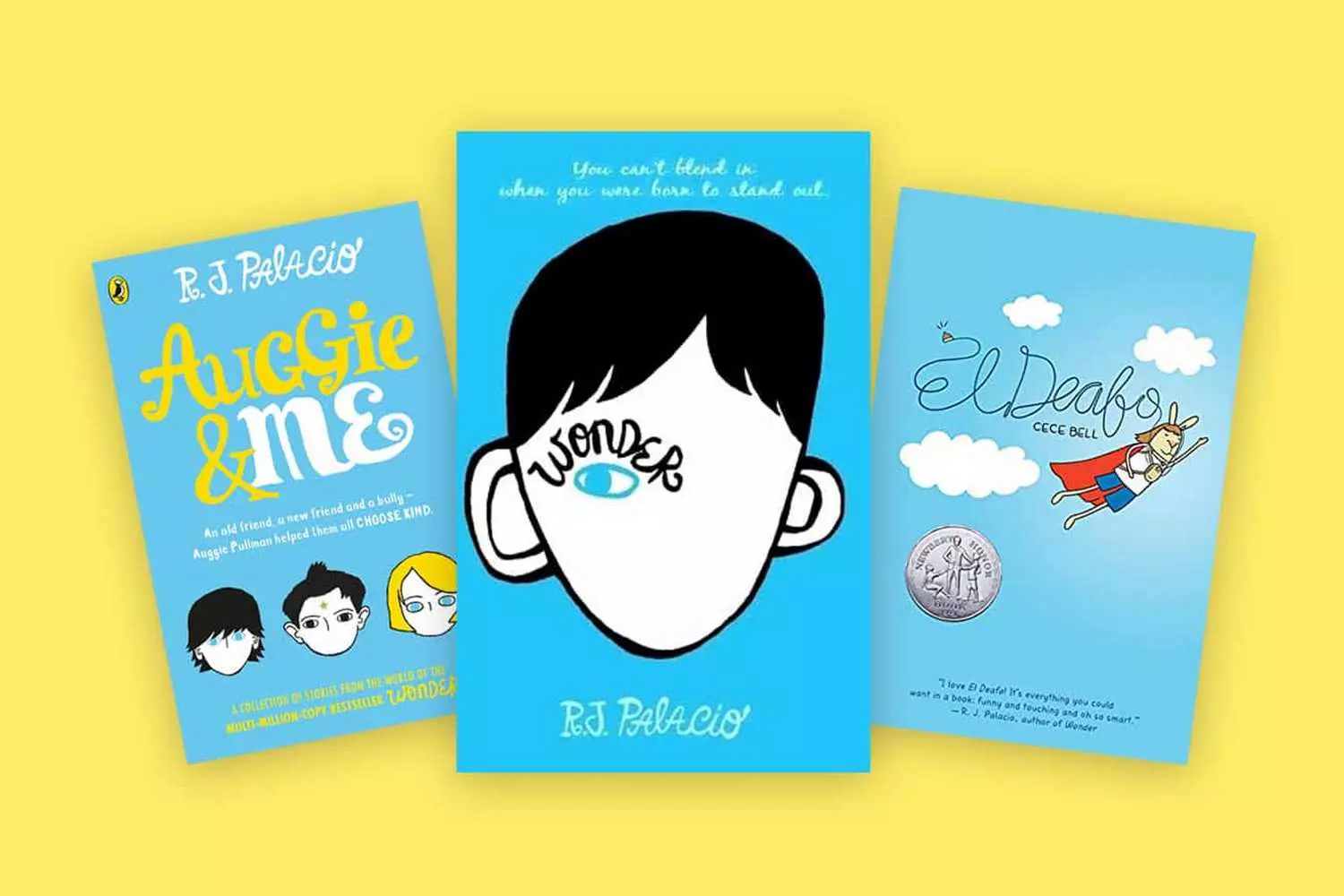
Books That Transform: American Teen Literature
American literature for teenagers is one of the most diverse and captivating in world literature. These works address crucial themes of growing up, self-discovery, friendship, love, social injustice, and finding one's place in the world. Many of them have become iconic works that continue to inspire and move new generations. Let's get acquainted with several significant works that vividly reflect the spirit of American youth literature.
- 01. The Catcher in the Rye, J.D. Salinger
The Catcher in the Rye is one of the most famous and discussed novels in the history of American literature, touching on themes of teenage depression, the search for meaning in life, and alienation. The main character, Holden Caulfield, is a teenager who, after being expelled from an elite school, begins searching for his place in the world. He faces a painful gap between childhood and adulthood, making his internal struggles especially relevant for young readers.
This novel has remained an important work for teenagers going through challenging moments in their quest for identity. Its profound reflections on life, human relationships, and the loss of innocence resonate with many readers. - 02. The Hate U Give, Angie Thomas
The Hate U Give is a contemporary bestseller that addresses issues of racial discrimination, police brutality, and social inequality. The main character, Starr Carter, is a Black teenage girl who witnesses the killing of her best friend by a police officer. The book tells the story of her fight for justice, how she must balance two worlds — the one she lives in and the one that constantly judges her.
This work is important not only as a harsh and truthful social critique but also as a story of coming-of-age, finding one's voice, and navigating a world filled with inequality. It brilliantly shows how essential it is to fight for one's rights and not be afraid to stand up against injustice. - 03. The Perks of Being a Wallflower, Stephen Chbosky
This touching and deep novel tells the story of a teenager named Charlie, who is trying to cope with personal demons, past tragedies, and the challenges of growing up. Through letters Charlie writes to an anonymous friend, we observe his struggles, personal growth, friendship, and love.
The novel addresses themes of mental health, loneliness, social isolation, and the search for one's place in the world, making it incredibly relevant for teenagers going through similar emotions. Its sincerity and vulnerability attract readers, inspiring them to seek support and recognize their own worth. - 04. Looking for Alaska, John Green
This is John Green's debut novel, and he became an iconic figure among teenagers for his ability to write about difficult and profound topics with ease and honesty. The book tells the story of Miles, who goes to a new school and meets Alaska — a girl whose behavior and personality profoundly impact his life. The story deals with themes of love, loss, and the search for meaning in life, as well as how teenagers cope with challenges and growing up.
Green masterfully shows how complex experiences and events shape personal development. This is a book about self-discovery, friendship, and the importance of staying sincere in relationships with others. - 05. Eleanor & Park, Rainbow Rowell
Eleanor & Park is a novel about the love between two teenagers, Eleanor and Park, who find solace and understanding in each other during a difficult time in their lives. The novel touches on themes of teenage love, loneliness, and the problems faced by children growing up in families where there is violence, poverty, and discrimination.
This book is known for its sincerity and realism in depicting teenage love, fears, and hopes. It is a moving story that offers a glimpse into love and relationships through the lens of teenagers facing inner conflicts and the complexities of growing up. - 06. Speak, Laurie Halse Anderson
Speak is a book that addresses the crucial issue of sexual violence and the silence that often follows it. The main character, Melinda, goes through a traumatic experience and becomes the target of ridicule at school. She withdraws into herself until she gradually begins to regain her confidence and find her voice. This novel is a powerful tool to help teenagers understand the importance of speaking about their experiences and supporting those who are going through similar struggles.
The book not only sheds light on difficult topics but also teaches the importance of expressing one's feelings and emotions, overcoming fear, and standing up against injustice. This work has become iconic for teenagers who have faced such issues and encourages openness and self-affirmation. - 07. Island of the Blue Dolphins, Scott O'Dell
Island of the Blue Dolphins is a powerful and moving story about a girl named Kara, who finds herself alone on an uninhabited island in the Pacific Ocean. This book touches on themes of survival, loneliness, strength of spirit, and the unity between humans and nature. After her tribe leaves the island, Kara is left alone, and she must learn to rely solely on her own abilities to survive.
The work not only tells of the struggle against the elements but also the inner battle of the protagonist. Despite her solitude, Kara finds ways to interact with nature and gradually finds solace in her surroundings. This book teaches teenagers the importance of independence, accepting circumstances, and having confidence in their own abilities. Moreover, through Kara, the reader can reflect on the importance of preserving the environment and how everything in the world is interconnected. - 08. The Watsons Go to Birmingham, Christopher Paul Curtis
This is a gripping yet touching story about the Watson family, who take a trip to Birmingham, Alabama, in 1963, during the events related to the Civil Rights movement in the U.S. The main character, 10-year-old Kenny, and his family become witnesses to devastating events, including the bombing of a church that kills four African American girls.
This book highlights critical issues of racial discrimination and social injustice, showing them through the lens of children's experiences. Despite the serious topics, the work is filled with humor and vitality, making it accessible for teenagers. It vividly demonstrates how hardships and tragedies can affect an entire generation and teaches teenagers compassion, honesty, and the importance of resilience in the face of injustice. - 09. The Giver, Lois Lowry
The Giver is one of the most famous and enigmatic novels that immerses the reader in a future world where society is built on the principle of strict control and the disappearance of emotions. The main character, 12-year-old Jonas, lives in a utopian society where everything is governed by rules and an emotionless life. However, when Jonas becomes the "Receiver of Memories," he discovers a world full of emotions, pain, but also love.
This work addresses issues of free will, responsibility, and the power of choice, while also posing important moral questions for teenagers about valuing their feelings and experiences. It encourages reflection on alienation, the loss of individuality, and personal responsibility toward society, making it relevant to contemporary youth. The Giver has become a cult work that encourages teenagers to think about the meaning of freedom and authentic human experience. - 10. To Kill a Mockingbird, Harper Lee
To Kill a Mockingbird is not just a school classic; it is a book that teaches how to see the world through the lens of justice, compassion, and honesty. The events unfold in a small town in the American South, where a girl named Scout Finch watches her father, lawyer Atticus, defend an innocent Black man accused of a horrific crime.
The story is told from the perspective of a child but raises incredibly mature themes — racism, bias, moral principles, and the power of personal choice. This work teaches that true heroism lies in being able to stay honest when the whole world says otherwise. The book is filled with the light, humor, and warmth of childhood memories but is also a challenge to society, one that still resonates today. It helps teenagers (and others) realize how important it is to stand for what is right and not be afraid to go against the crowd when it comes to justice.
Modern American teenage literature offers a rich variety of works that address the most important issues of adolescence — from the search for identity and love to the fight against personal problems and social inequalities. These works offer young readers unique stories that help them better understand themselves, their emotions, and the world around them, inspiring teenagers to reflect on crucial issues, overcome life’s challenges, and develop critical thinking and compassion.
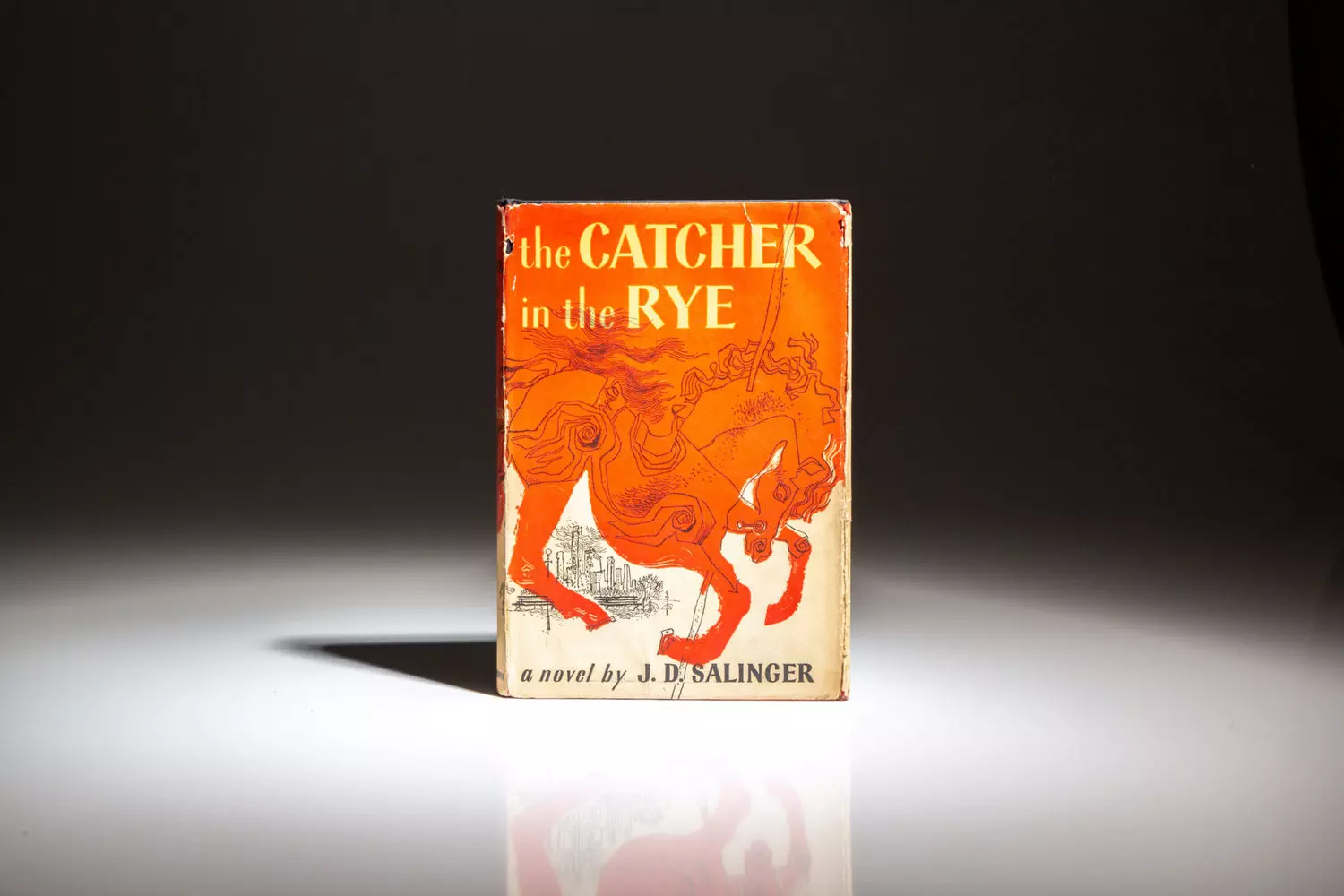
How to Choose Books by Age
Children's books play different roles at each stage of growing up. From the first visual impressions to complex moral dilemmas, literature helps children grow, understand themselves, and the world around them. When choosing books, it’s important to consider the child's age, interests, and level of development. Here is a detailed guide that you can refer to:
- 01. 0–3 years: Pictures and Rhythm
At this stage, children are just starting their acquaintance with books. They are attracted to bright colors, clear shapes, and repetitive rhythmic texts.
- Cardboard books with sturdy pages
- Simple texts, rhymes, repetitions
- Illustrations covering the full spread, minimal text
- Interactive elements: flaps, textures
- Examples: Goodnight Moon (Margaret Wise Brown), Brown Bear, Brown Bear, What Do You See? (Bill Martin Jr.)
- 02. 4–6 years: Stories and Emotions
At this age, the child’s emotional intelligence develops. It’s important for them to understand feelings, friendship, and the behavior of characters.
- Simple plots with a moral
- Stories about family, animals, friendship
- Focus on emotional expression and cause-and-effect relationships
- Examples: The Very Hungry Caterpillar (Eric Carle), Where the Wild Things Are (Maurice Sendak)
- 03. 7–9 years: Adventures and Humor
Children become independent readers, and the texts in books become longer. They are interested in adventures, puzzles, and funny situations.
- More text, while illustrations are still included
- Simple dialogues, clear plots
- Main characters are peers of the reader
- Examples: Charlotte’s Web (E. B. White), Magic Tree House (Mary Pope Osborne)
- 04. 10+ years: Deep Meanings
Teenagers seek answers to important life questions and want to see their feelings reflected in books.
- Themes of self-definition, friendship, justice
- Complex plots, relevant issues
- Opportunity for deep discussion after reading
- Examples: Wonder (R. J. Palacio), Holes (Louis Sachar), The Giver (Lois Lowry)
Important: At each age, keep the element of play and participation. Let the child choose books, flip through them, ask questions, and discuss. Reading should bring joy and a sense of discovery.
The Cost of Raising a Child in America
Several interesting facts about American children's books
- 01. "The Very Hungry Caterpillar" by Eric Carle was originally conceived as a book about a bookworm. The author wanted to tell the story of a worm that eats through the pages, but the editor suggested making the character more likeable — thus, the caterpillar was born. The book became a bestseller, with over 55 million copies sold, and its holes in the pages became one of the first examples of interactivity in children's literature!
- 02. "Where the Wild Things Are" by Maurice Sendak was initially criticized for its "too scary" monsters, but children loved them — now it is a cult classic about children's emotions.
- 03. Dr. Seuss wrote "The Cat in the Hat" using only 236 words from a first-grade vocabulary list to help children learn to read.
- 04. "Charlotte's Web" is one of the few children's books where the main character dies (but it is done so subtly that it teaches children to accept loss).
- 05. In the original "Where the Wild Things Are", the monsters have Yiddish names (for example, Tzider — from “tzores,” meaning “troubles”). This is a reference to Sendak’s childhood in a Jewish family.
- 06."The Nothing Book" (1974) — an empty book where children created their own story. A bestseller, with a circulation of 2 million copies!
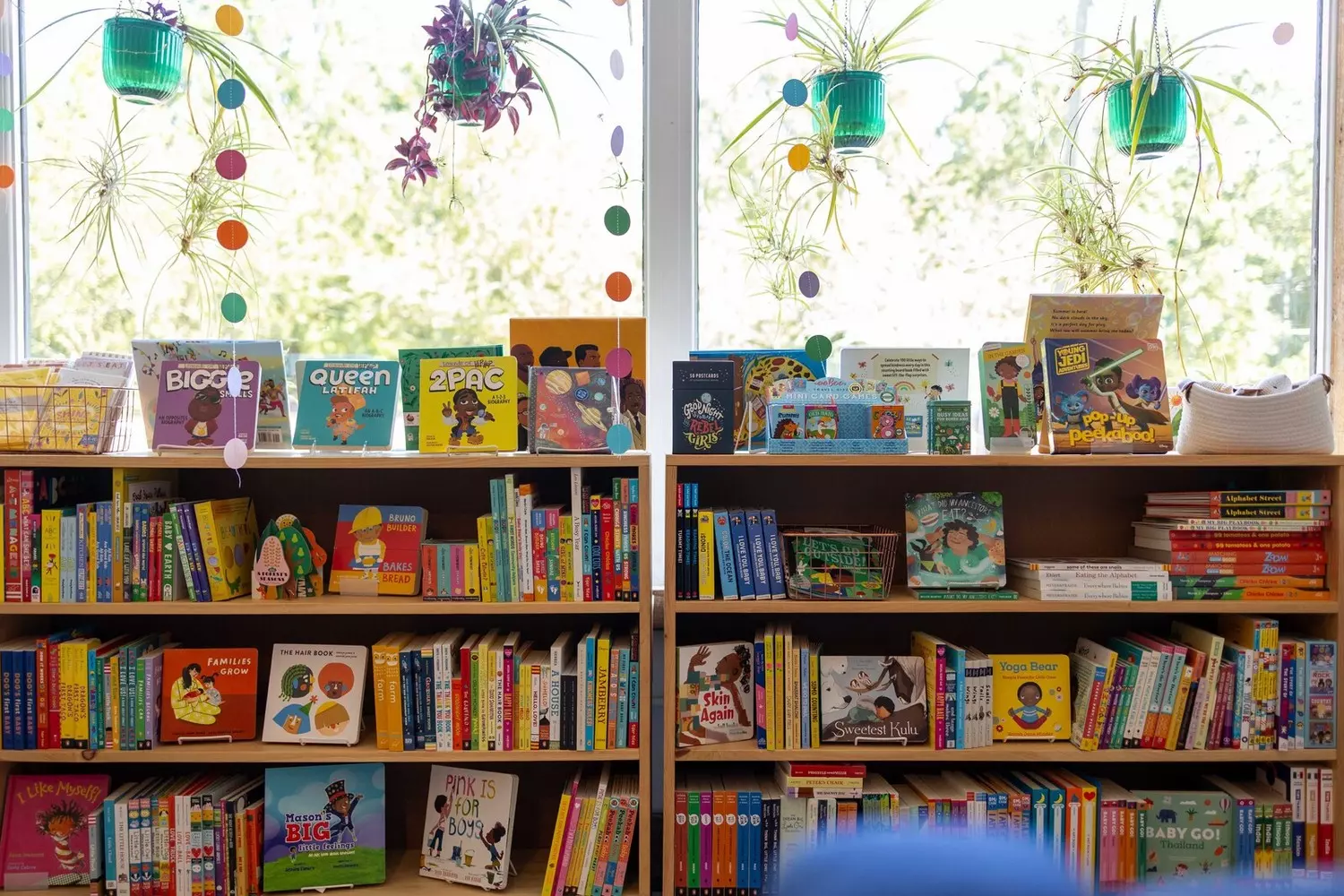
Open the world of books and adventures with American Butler
American children's literature is not just fairy tales and stories, it's a true journey through the culture, values, and dreams of another country. But why not make this journey even more vivid?
American Butler invites you and your child to embark on real literary adventures — not just through the pages of books, but also through the actual streets, museums, and places where beloved stories come to life. Imagine taking tours in New York following in the footsteps of "Wonder," strolls through Boston in the spirit of Beverly Cleary’s classic tales, or visiting book fairs and children's libraries in the USA.
We organize personalized tours and routes inspired by children's literature, which will help your child feel the atmosphere of their favorite books and speak English with ease and interest.




































